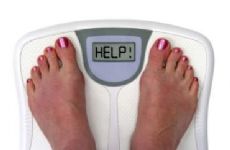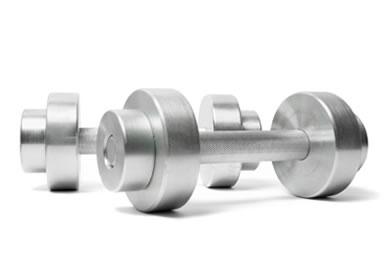|
When it comes to low-impact cardio that burns calories while toning muscle, walking wins every time. Sticking to a regular walking program puts you on the fast track to a slew of health benefits, including reduced risk of heart disease, stronger bones and joints, improved mental health and accelerated weight loss. When combined with a healthy, well-balanced diet, walking can be a great way to lose or maintain weight—but do you know just how many calories all those steps are really burning? The actual number of calories burned walking may be more—or less—than you think. How Many Calories Should You Expect to Burn While Walking?The two most important factors that determine your calorie burn are your distance and your weight. According to many online calorie calculators, a 150-pound person would burn approximately 115 calories for every 30 minutes. However, it’s important to note that this estimate is just that: an estimate. There are two different types of calorie burn: the total amount and the net amount. The net amount is calculated by subtracting your resting metabolic rate—the number of calories your body burns powering basic bodily function like circulation and breathing while at in a resting state—from the extra amount burned during exercise. What about the calorie readout on your activity tracker or the treadmill screen? Fitness coach Alex Haschen says that should be viewed as more of an estimate than a scientific calculation, as those numbers can fluctuate above or below the actual calorie burn. Haschen recommends subtracting 25 percent of the total calorie burn to gain a more accurate picture of what you’re truly burning. If you’re new to walking or exercise in general, you might be surprised to learn that you’re likely burning more calories than seasoned speed walkers who have been hoofing it for years. Strength and conditioning coach Brandon Mentore points out that people who are in better physical shape will adapt faster to an activity and burn fewer calories doing it, while those who are less fit will have a higher calorie burn until their bodies adapt. How to Increase Your Calories Burned While WalkingGo the extra mile(s). It might seem like the best way to burn more calories is to ramp up your walking pace. Although increasing your speed doesn’t have as much caloric impact as weight and distance, it will enable you to cover more ground. If you only have 30 minutes to walk, for example, going faster can help you hit your desired mileage and calorie goal. Mix it up. For maximum calorie burn, running coach Kyle Kranz recommends incorporating a mix of long, slow distances and high-intensity intervals. "Variety is the main ingredient when it comes to improving your health and well-being," he says. If your joints can handle it, try sprinkling in some short bursts of jogging or race walking to amp up your calorie burn. Get friendly with hills. Incorporating incline will boost your calorie burn. If you exercise outside, plan your route to include some hills or stairs; if you’re a treadmill walker, increase the incline setting. Use walking poles. Using walking poles incorporates the upper-body muscles, which ramps up overall calorie burn. As an added bonus, they can also reduce impact on the knees and other joints. If walking is your activity of choice, you’re already ahead of the game. All you need is your own two feet, some quality walking shoes and the open road to get on track with your weight-loss or fitness goals. If the calorie burn seems small, remember that it all adds up. In addition to your “official” daily walk, sprinkle in shorter bursts throughout the day to increase your total expenditure. Simple changes like parking far away from building entrances, walking around the block while talking on the phone and always taking the stairs instead of the elevator lead to several hundred extra steps. Over time, when combined with a healthy diet and some strength training, the calories burned walking will keep you on pace to meet your goals. |
Popular Entries
Related Entries
More From SparkPeople
|





















.jpg)
.jpg)
